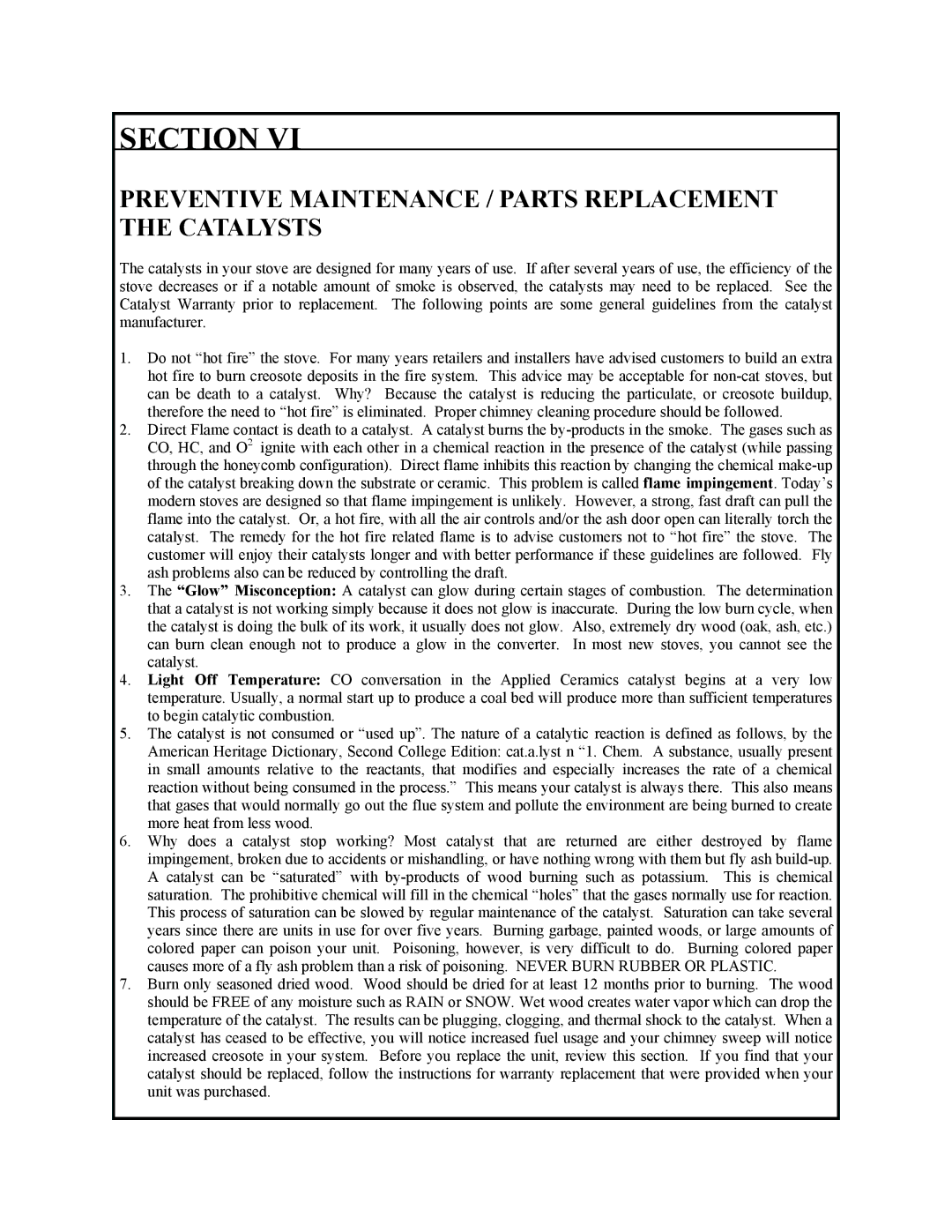
SECTION VI
PREVENTIVE MAINTENANCE / PARTS REPLACEMENT THE CATALYSTS
The catalysts in your stove are designed for many years of use. If after several years of use, the efficiency of the stove decreases or if a notable amount of smoke is observed, the catalysts may need to be replaced. See the Catalyst Warranty prior to replacement. The following points are some general guidelines from the catalyst manufacturer.
1.Do not “hot fire” the stove. For many years retailers and installers have advised customers to build an extra hot fire to burn creosote deposits in the fire system. This advice may be acceptable for
2.Direct Flame contact is death to a catalyst. A catalyst burns the
3.The “Glow” Misconception: A catalyst can glow during certain stages of combustion. The determination that a catalyst is not working simply because it does not glow is inaccurate. During the low burn cycle, when the catalyst is doing the bulk of its work, it usually does not glow. Also, extremely dry wood (oak, ash, etc.) can burn clean enough not to produce a glow in the converter. In most new stoves, you cannot see the catalyst.
4.Light Off Temperature: CO conversation in the Applied Ceramics catalyst begins at a very low temperature. Usually, a normal start up to produce a coal bed will produce more than sufficient temperatures to begin catalytic combustion.
5.The catalyst is not consumed or “used up”. The nature of a catalytic reaction is defined as follows, by the American Heritage Dictionary, Second College Edition: cat.a.lyst n “1. Chem. A substance, usually present in small amounts relative to the reactants, that modifies and especially increases the rate of a chemical reaction without being consumed in the process.” This means your catalyst is always there. This also means that gases that would normally go out the flue system and pollute the environment are being burned to create more heat from less wood.
6.Why does a catalyst stop working? Most catalyst that are returned are either destroyed by flame impingement, broken due to accidents or mishandling, or have nothing wrong with them but fly ash
7.Burn only seasoned dried wood. Wood should be dried for at least 12 months prior to burning. The wood should be FREE of any moisture such as RAIN or SNOW. Wet wood creates water vapor which can drop the temperature of the catalyst. The results can be plugging, clogging, and thermal shock to the catalyst. When a catalyst has ceased to be effective, you will notice increased fuel usage and your chimney sweep will notice increased creosote in your system. Before you replace the unit, review this section. If you find that your catalyst should be replaced, follow the instructions for warranty replacement that were provided when your unit was purchased.
